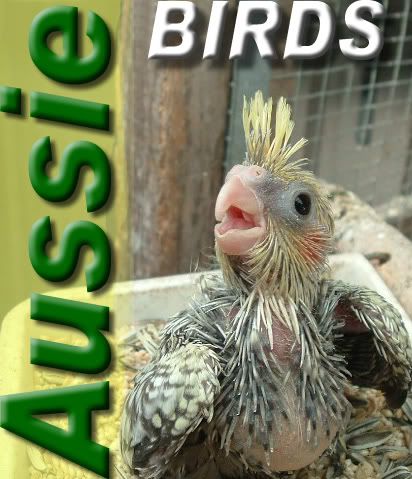Post by avinet on May 9, 2011 10:27:50 GMT 10
Hi Richard and welcome. Are you in Australia? A clutch of ringneck babies in the autumn is unusual although by no means unheard of. I have a hen at present convinced it is breeding season although her mate has been keeping a better eye on the calender and isn't interested.
To take your pair at face value with no hidden splits, just a grey cock with a lacewing - or pallid to give it the correct name - the first thing to note is that a grey ringneck is actually a combination or a grey-green and a blue mutation with the visible combination of these two colours resulting a a bird that is grey in appearance. And since blue is a recessive gene and grey-green (often called olive) is a dominant gene we are dealing with a bird that has both a dominant and a recessive gene.
The hen in contrast as a pallid has a sex-linked recessive mutation.
You say that the 3 babies appear to be grey - the same colour as their father. Since a grey is a visual grey-green and blue combined, and since blue is recessive, then to get any grey babies that means the hen must be split to blue to enable the babies to have blue in their visual makeup.
So, with a grey cock and a pallid split blue hen the results would be:-
cocks
25.0% grey split pallid
25.0% blue split pallid
25.0% grey-green split blue and pallid
25.0% green split blue and pallid
hens
25.0% grey
25.0% blue
25.0% grey-green split blue
25.0% green split blue
That raises an interesting question - you have 3 out of 3 grey babies and on average only 1 in 4 babies should be grey - a statistical 1 in 64 chance of that happening. It could happen but it is unlikely. That raises the possibility that your cock is a double factor grey - with dominant genes they can be single or double factor with the double factor essentially increasing the chances of it occuring.
With a double factor grey and a pallid the results would be:-
cocks
50.0% grey split pallid
50.0% grey green split blue and pallid
hens
50.0% grey
50.0% grey-green split blue
That gives odd of getting three greys out of 3 babies as 1 in 8 - much more likely.
I guess more breeding will let you know the cock's true genetic makeup - if you get any true blue or green babies then he is a single factor grey-green, but if you get only greys and grey-green then he is a double factor grey-green.
Hope this hasn't confused you more!
cheers,
Mike
To take your pair at face value with no hidden splits, just a grey cock with a lacewing - or pallid to give it the correct name - the first thing to note is that a grey ringneck is actually a combination or a grey-green and a blue mutation with the visible combination of these two colours resulting a a bird that is grey in appearance. And since blue is a recessive gene and grey-green (often called olive) is a dominant gene we are dealing with a bird that has both a dominant and a recessive gene.
The hen in contrast as a pallid has a sex-linked recessive mutation.
You say that the 3 babies appear to be grey - the same colour as their father. Since a grey is a visual grey-green and blue combined, and since blue is recessive, then to get any grey babies that means the hen must be split to blue to enable the babies to have blue in their visual makeup.
So, with a grey cock and a pallid split blue hen the results would be:-
cocks
25.0% grey split pallid
25.0% blue split pallid
25.0% grey-green split blue and pallid
25.0% green split blue and pallid
hens
25.0% grey
25.0% blue
25.0% grey-green split blue
25.0% green split blue
That raises an interesting question - you have 3 out of 3 grey babies and on average only 1 in 4 babies should be grey - a statistical 1 in 64 chance of that happening. It could happen but it is unlikely. That raises the possibility that your cock is a double factor grey - with dominant genes they can be single or double factor with the double factor essentially increasing the chances of it occuring.
With a double factor grey and a pallid the results would be:-
cocks
50.0% grey split pallid
50.0% grey green split blue and pallid
hens
50.0% grey
50.0% grey-green split blue
That gives odd of getting three greys out of 3 babies as 1 in 8 - much more likely.
I guess more breeding will let you know the cock's true genetic makeup - if you get any true blue or green babies then he is a single factor grey-green, but if you get only greys and grey-green then he is a double factor grey-green.
Hope this hasn't confused you more!
cheers,
Mike




